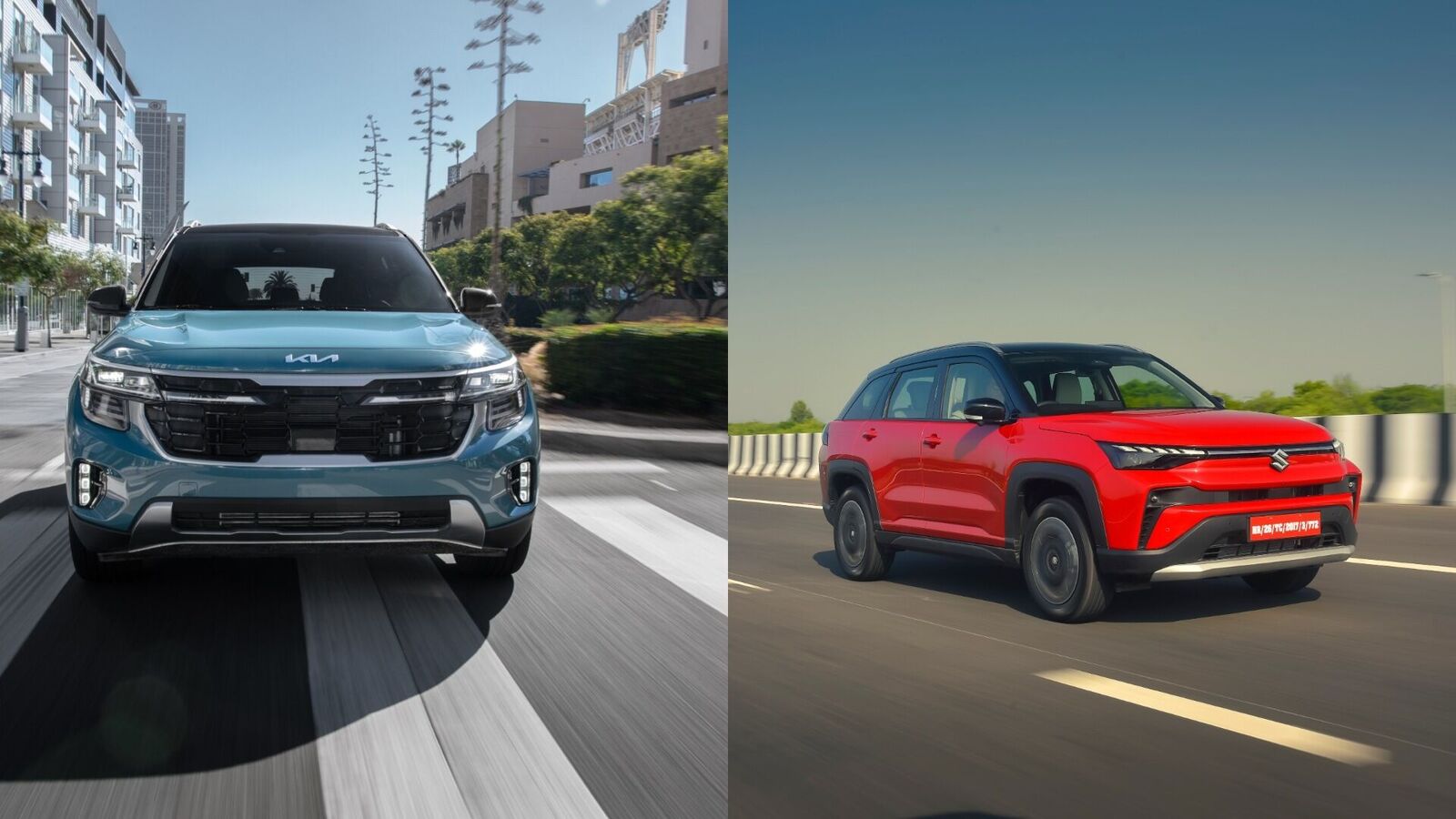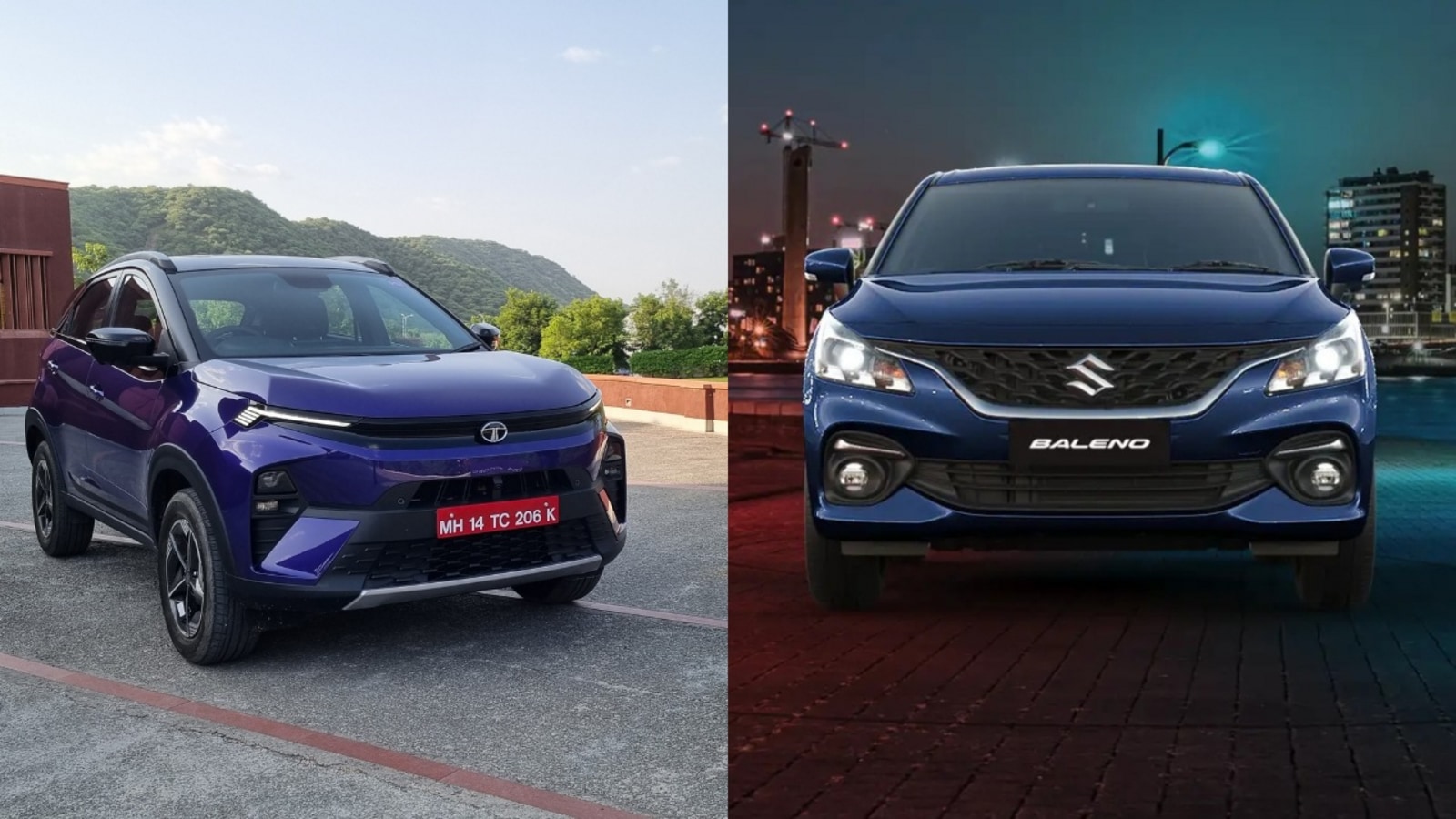- The Maruti Suzuki Victoris is the latest Arena flagship under the brand and enters the compact SUV race against the Kia Seltos, one of the main headliners in the space.
View Personalised Offers on
The Maruti Suzuki Victoris has just been launched into the highly competitive compact SUV segment, where the Kia Seltos has been one of the main headliners since 2019. Both SUVs offer multiple engine options, feature-rich interiors, and a well-rounded safety suite. Although both compete in the same segment and check a lot of the same boxes, they cater to buyers with slightly different priorities. Here’s how the two stack up against each other in terms of pricing, technical details, and safety:


Pricing:
The Maruti Suzuki Victoris undercuts the Kia Seltos at almost every price point, starting nearly ₹70,000 cheaper in its base trim. Mid-variant pricing continues to favour the Victoris, often coming in lower than comparable Seltos trims, offering buyers more affordability. At the top end, however, the price gap narrows, with Victoris’ strong-hybrid trims approaching ₹20 lakh and the Seltos GTX+ and X-Line slightly exceeding ₹20.5 lakh. In this bracket, buyers may prioritise design appeal and premium features, where the Seltos still has an edge.
Also Read : Maruti Suzuki Victoris fuel efficiency tested; Check out the results
| Specifications Comparison | Kia Seltos | Maruti Suzuki Victoris |
|---|---|---|
| Engine | 1482.0 to 1497.0 cc | 1462.0 to 1490.0 cc |
| Transmission | Manual & Automatic | Manual & Automatic |
| Mileage | N/A | N/A |
| Fuel Type | Petrol,Diesel | Petrol,Hybrid (Electric + Petrol),CNG |
Specifications:
Both SUVs are available with three engine options, clearly showcasing the type of package each carmaker aims to offer its buyers. Under the hood, the Victoris comes with a 1.5-litre naturally aspirated petrol engine, a factory-fitted CNG option, and a strong hybrid with the AllGrip Select AWD system.
The Seltos has a more powerful 1.5-litre NA petrol unit, and opts out of the CNG and hybrid territories for a 1.5-litre turbo-petrol and a 1.5-litre diesel mill. Here, the Victoris’ CNG tech and the hybrid AWD combo set it apart, whereas the Seltos focuses on higher-power petrol and diesel choices.
Victoris vs Seltos: Engine specifications
| Model / Variant | Engine Type | Power & Torque | Gearbox Options |
|---|---|---|---|
| Maruti Victoris | 1.5L NA Petrol | 103 bhp / 137 Nm | 5-speed MT, 6-speed AT |
| 1.5L CNG | 87 bhp / 121 Nm | 5-speed MT | |
| 1.5L Strong Hybrid | 91 bhp / 122 Nm (combined) | e-CVT | |
| Kia Seltos | 1.5L NA Petrol | 113 bhp / 144 Nm | 6-speed MT, iVT |
| 1.5L Turbo-Petrol | 158 bhp / 253 Nm | 6-speed iMT, 7-speed DCT | |
| 1.5L Diesel | 114 bhp / 250 Nm | 6-speed iMT, 6-speed AT |
Tech package:
Both SUVs offer 10.25-inch displays, panoramic sunroof on higher trims and connected-car suites. The Victoris adds a gesture-powered tailgate, 64-colour ambient interior lighting, an Infinity Dolby Atmos 8-speaker setup, and extensive Suzuki Connect functions with OTA updates. On the other hand, the Seltos throws in a seamless dual-screen layout on the dash, dual-zone climate control, ventilated seats and GT/X-Line cosmetic packages. The end result here is similar tech depth overall; while the Victoris focuses on cabin ambience and connected features, the Seltos offers sportier trims and a more premium interior with better creature comforts.
Also Read : Victoris vs Grand Vitara – Which Maruti Suzuki SUV makes more sense
Safety suite:
On the safety front, the Victoris stands tall with a 5-star rating from Bharat NCAP, featuring six airbags, ESC, 360° camera, HUD, and Level-2 ADAS calibrated for Indian conditions. The Seltos also provides a similar extent of safety features, including Level-2 ADAS from the GTX+ trim onward, but carries a 3-star Global NCAP rating from 2020. The Victoris thus offers broader ADAS coverage and a stronger crash-test rating, while Seltos limits its advanced safety features to higher trims with a less robust chassis.
Check out Upcoming Cars in India 2025, Best SUVs in India.
First Published Date: 29 Sept 2025, 18:20 pm IST




